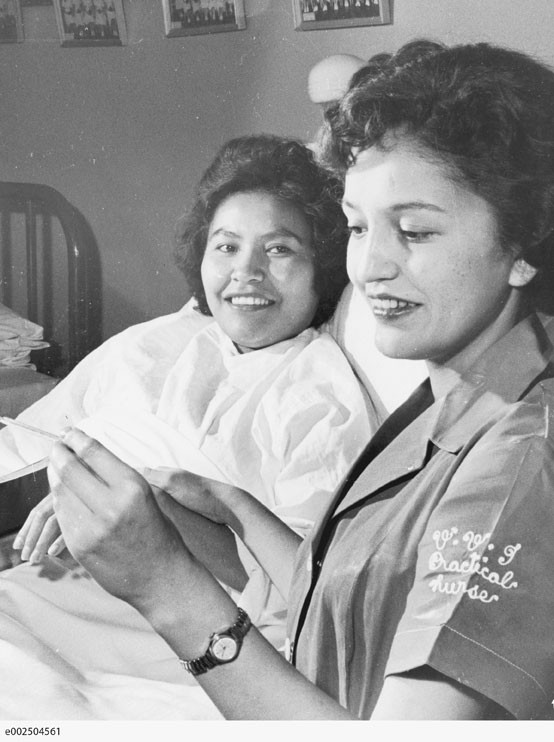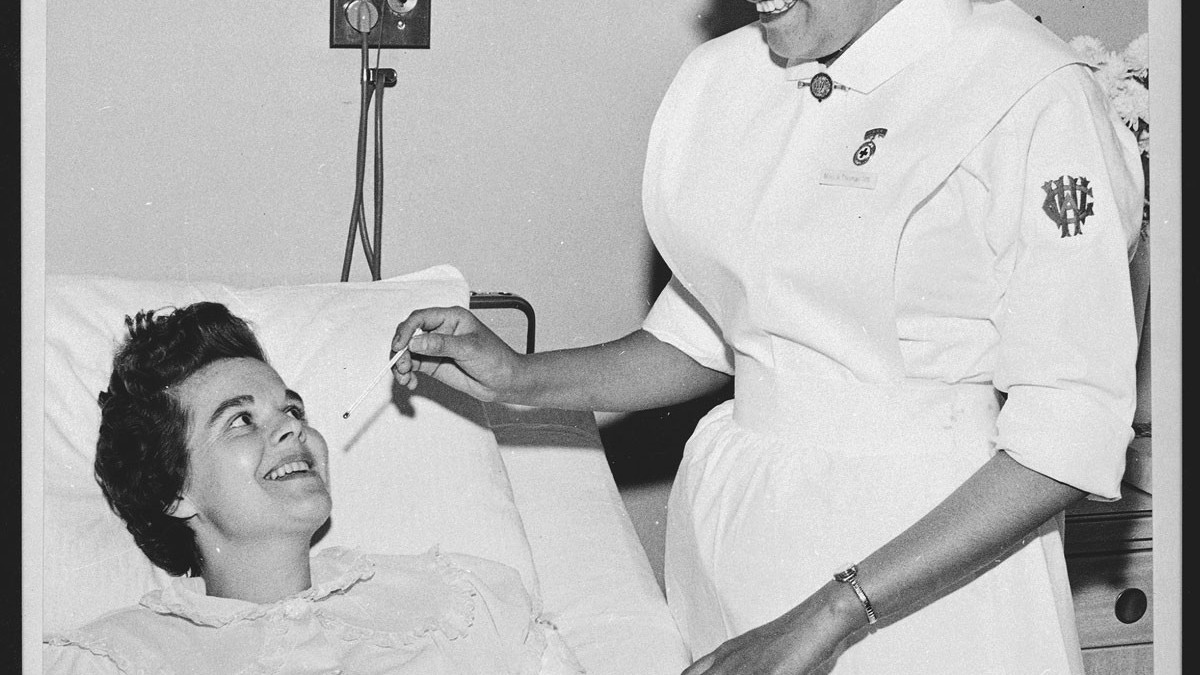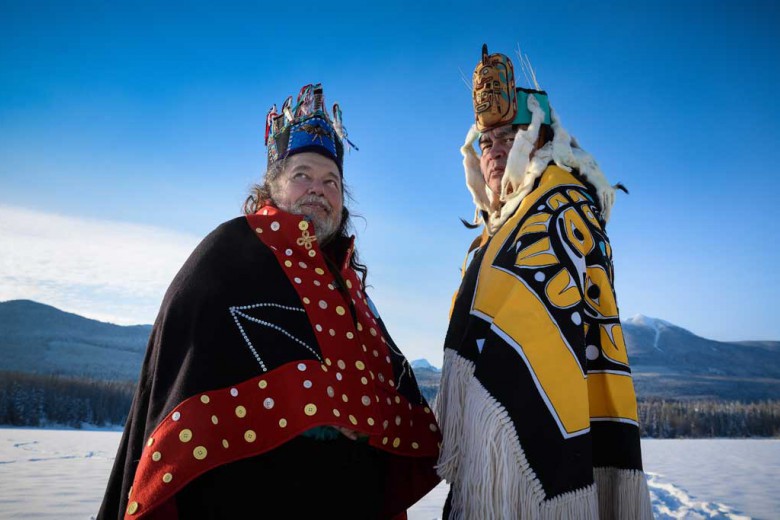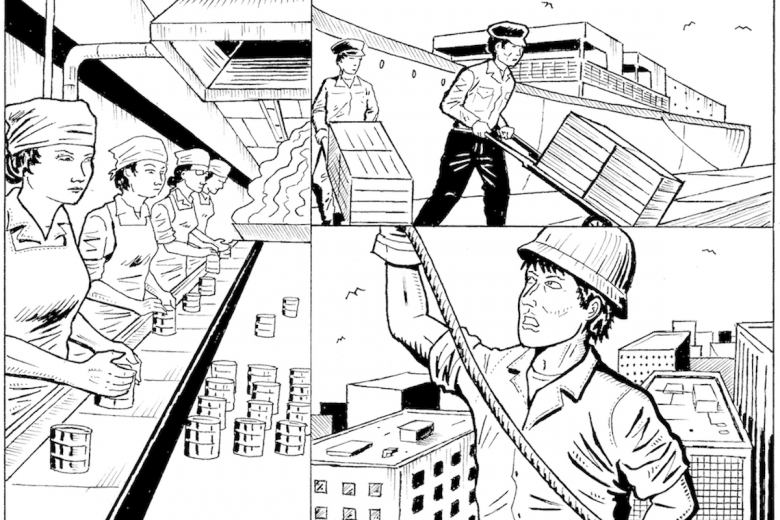In the late summer of 2016, it was revealed that two sets of infants were switched at birth at the Norway House Indian Hospital in the mid-1970s. That this happened not once, but twice in the same year, remarked Grand Chief Sheila North Wilson of Manitoba Keewatinowi Okimakanak, is disheartening. “There should have been very thorough care for our Indigenous families even back in the day, and clearly there wasn’t,” she said. Former provincial NDP member for Keewatinook, Eric Robinson, who himself was born at the hospital, called for the federal government to launch an external investigation into the switch. Health Canada responded with “concern,” and a promise to cover the costs of confidential DNA testing for people born at Norway House in the mid-1970s. While distressing, this story is not all that surprising. Mistrust of health-care services, the suspicion of inferior treatment and structural anti-Indigenous racism, and the superficial, distant, medicalized, stop-gap response from Health Canada are common characteristics of the relationship between Indigenous people and health-care system.
Around the same time that the Norway House infants were switched, Indigenous nurses formed a group that identified and documented systemic inequality in health care, and made space for Indigenous interventions into the otherwise top-down, state-run Indian health system. The group lobbied the government for the improved health of Indigenous peoples and brought together a small but growing workforce of Indigenous nurses who saw in their labour a means of actively engaging with Indigenous communitie. Having recently celebrated their 40th year, it is a good time to reflect on the early history of this group – now called the Canadian Indigenous Nurses Association.
The history of Indigenous nurses in Canada was explored in my book Indigenous Women, Work, and History, 1940-1980 (University of Manitoba Press). The following is an excerpt from the text.
————
In 1975, Indigenous nurses assembled to hold the first conference of what would become RNCIA (Registered Nurses of Canadian Indian Ancestry), now the [Canadian Indigenous Nurses Association]. RNCIA was the first organization of Aboriginal professionals in Canada, and its original objectives were unlike those of any other nursing organization. The primary goals of the organization were to improve the health of Aboriginal communities and to position professional Aboriginal nurses as critical components of the Indian health field. The organization also aimed to track and represent Aboriginal people in the profession; to bring to light problems related specifically to MSB (Medical Services Branch) nursing, including recruitment and retention of nurses; and to make visible the overwhelming under-representation of Aboriginal nurses in the profession. Another immediate goal of the organization was to promote health professions among Native students and improve their access to education. The founding of the organization was historically significant in terms of Aboriginal nursing, health, labour, and education, but it was not a starting point for the history of Aboriginal nurses. Rather, it was, as Jean Goodwill, a leading Cree RN from Saskatchewan and RNCIA organizer, put it, a “turning point.”
————
RNCIA formed in a period during which First Nations, Métis, and Inuit peoples organized formally for unmitigated and constitutionally based rights to self-government and status as Aboriginal peoples in Canada. Self-determination in health was an integral aspect of these larger efforts. In 1969, the Canadian government proposed to dissolve the special status and rights of Aboriginal people and abandon the Indian Act. The proposal, called “The White Paper,” moved to terminate federal responsibility and accountability and transfer all services to provinces in an effort to foster legal, social, and economic equality between Aboriginal and non-Aboriginal people in Canada. The vision of social equality was predicated on universal welfare programs. However, to Native people, social programs such as health and education are embedded in distinct historical relations and reciprocal treaty responsibilities between Indigenous people and the federal government. For example, the “Medicine Chest Clause,” negotiated into Treaty Six, meant that a comprehensive health plan that incorporates all aspects of present-day health care should be available to all Native people; Aboriginal rights to health care thus predate and pre-empt universal welfare programming. Glaring health inequities and poor health services became important symbols not only of the neglected rights of Aboriginal people to adequate medical care, but also of how marginalized Aboriginal people had become and of the constraints on their capacity to deliver services to their own people.
Indian Control
RNCIA’s early history provides an important Aboriginal nurse perspective on Indigenous labour in the Medical Services Branch at a time when Native nurses believed that that system would eventually be theirs. “Indian Control” was an important organizing principle for Aboriginal nurses in these years. What did RNCIA nurses mean when they referred to “Indian Control”? First, Indian control expressed the goal of self-determination and self-government in the field of health. Second, Indian control challenged the lack of consultation by governments with Aboriginal people in policies that affected them. Third, at a time when the federal government still sought integration, most pronounced perhaps in the 1969 White Paper, Indian control articulated Indigenous peoples’ difference in terms of their cultural and historical place within Canada and the rights and respect that derive from it. Indian control also took on more specific meanings within Aboriginal nursing; it referred to acting with authority in the areas of knowledge production, policy and planning, and education in Aboriginal health. The 1975 RNCIA objectives make it clear that “Indian Control” was about engaging in the myriad ways in which power is used in the field of health. Indian control was very much a verb.
————
The objectives of RNCIA seem so reasonable as to be perhaps commonplace today: to improve Aboriginal health by fostering education, data collection, and Aboriginal nurse participation in MSB programming and health-care provision. However, in the historical context of Aboriginal health systems and status, these goals were revolutionary. The goals of the organization were to transform the very nature of the relationships between Indigenous people and governments and reject the colonization of Aboriginal health. Scholars have argued that colonization is not simply achieved through military operations, land appropriation, and legal submission, but also through “processes whereby the cultures and institutions of Indigenous peoples were demeaned, made illegal or displaced.” Thus colonization involved a much broader social, cultural, and political agenda that included the organization of special services and programs for Indigenous people, including in the area of health.
RNCIA OBJECTIVES (1975)1. To act as an agent in promoting and striving for better health for the Indian people, that is, a state of complete physical, mental, social and spiritual well-being.
2. To conduct studies and maintain reporting, compiling information and publishing of material on Indian health, medicine, and culture.
3. To offer assistance to government and private agencies in developing programs designed to improve health in Indian communities.
4. To maintain a consultative mechanism whereby the association, bands, government, and other agencies concerned with Indian health may utilize.
5. To develop and encourage courses in the educational system of nursing and health professions on Indian health and cross-cultural nursing.
6. To develop general awareness of Indian and non-Indian communities of the special health needs of Indian people.
7. To generally encourage and facilitate Indian control of Indian health involvement and decision-making in Indian health care.
8. To research cross-cultural nursing and cross-cultural medicine and develop and assemble material on Indian health.
9. To actively develop a means of recruiting more people of Indian ancestry into the medical field and health professions.
10. To generally develop and maintain on an ongoing basis, a Registry of Registered Nurses of Canadian Indian Ancestry.
…Health Services to Indigenous people in Canada were administered and controlled by the federal government, rather than by Indigenous people.Decisions were made from a top-down level, starting in Ottawa and working out to the regions. As such, Indian Health Service (IHS) functioned as a colonial entity with respect to Indigenous people: it was a non-local authority that operated without consultation with the people most affected by the service. In addition, IHS provision followed paternalistic and assimilative policies and provided services that were inferior to those accessed by other Canadians. The expanded system in the postwar era did not radically alter the colonial nature of the IHS. Many of the nurses who formed RNCIA in the mid-1970s witnessed this system first-hand. They desired a profound transformation of the relationship between government and Indigenous people, and a system with a cross-cultural ethic that was controlled by Indigenous people themselves.
————
Recruitment was foremost on RNCIA’s agenda. In the late 1970s and 1980s, the federal government developed several affirmative action policies to boost Aboriginal employment. These new policies were not in response to RNCIA, but RNCIA was certainly well aware of them, pointing to them to bolster their argument for hiring more Aboriginal nurses. They included the 1979 Indian Health Policy, the Canadian Human Rights Act (Section 15 of the Act provided for equal access for Aboriginal people to employment in the public services), the 1978 Treasury Board policy (which called for affirmative action in hiring Indian, Inuit, Métis, and non-status Indians in the public service), and a 1981 governor-in-council order that authorized Indian Affairs to tailor recruitment and selection for positions in the Indian and Inuit Recruitment and Development Program and the Native Development Program. But these did little more than earlier efforts by churches, the Department of Indian Affairs, and the [MSB] to recruit Aboriginal nurses. In 1983, of the 800 nursing positions in the [MSB], only 31, or just under 4 per cent, were filled by Native nurses, and none were reserved specifically for them. Aboriginal nurses who worked in these positions faced “subtle” prejudices such as tokenism and paternalism as well as more outright discrimination. One such injustice was the MSB’s practice of discouraging community members from visiting the living quarters of nursing stations, exacerbating the fact that nursing stations had housing units only for single nurses – a direct result of its long-standing practice of hiring non-local professional labour.
The 1983 survey showed two additional labour issues affecting Aboriginal people in the [MSB]. The first was the unwritten rule of employment whereby white or non-local women were hired in professional positions; Native people who worked in the system were largely its “support staff”…. The second issue, and one which affected Native registered nurses specifically, was location. Registered nurses complained of the limited choice of where they were able to obtain positions and the difficulties they faced when seeking employment in their own communities.
Significantly, RNCIA talked about representation in the workforce in a way that made place matter – Aboriginal nurses wanted to bring their skills home and work to benefit their communities.
But the survey, not surprisingly, revealed other ongoing concerns about the Medical Services Branch. The MSB was perceived to have poor work environments and administration practices. Staff shortages, rapid rates of turnover, ineffectual communication, racism, and overwork led to many of the problems within the Indian Health Services of Indian Affairs, the Medical Services Branch of the Department of Health and Welfare, and later the First Nations and Inuit Health Branch. In many ways, the survey fits into what has become a significant body of literature about MSB nursing that has articulated issues in management and supervision, professional development and career advancement, salary and remuneration, lack of professional support, and poor working environments leading to burnout. While these are common issues in nursing work environments, the MSB faced additional operational problems that affected medical supplies and transportation of patients and health professionals because of its distinct cultural and geographical context. Due to understaffing, many nurses saw their role expand significantly; however, their increased responsibilities were often not met with increased authority or pay; most MSB nurses were young and female and faced discrimination on the basis of both gender and age, not to mention race. These issues are well-documented in The Canadian Nurse and by nurses and nurse historians.
Additional problems with the MSB included the preparation and orientation of nurses for work, especially in places that were geographically isolated with respect to where many of the nurses came from. Moreover, the cross-cultural working environment demanded that nurses have cultural awareness skills and tolerance that they did not always have. This in addition to understaffing led to particularly volatile working environments. Thus RNCIA voiced concerns of a broader group of nurses who worked in the North, expressing a need for recruitment but also specialized training. In an interview during his tenure as president of RNCIA, Tom Dignan explained, “In the future…what we would like to do is encourage as many Native people to become involved in the health professions so they could deliver a service to their people. But also to any registered nurse whether she be a Native or non-Native [we would like] to assist her in making a transition from working in the big city [to working in the North and dealing with the] problems that are there. As it stands right now, there is no real training period or even a short course in some of the problems that she may or he may encounter in the North. And it seems to be a trial and error process. And the turnover of nurses in Canada working in the North with Native people is so great that every year, a new nurse has to reinvent the wheel in terms of learning the community.”
Madeline Dion Stout described the “empathy” RNCIA displayed for their non-Aboriginal colleagues “who chose to practise in the challenging work world of Indian health.” She also acknowledged the “unwholesome working conditions that many of them had to endure,” including working in isolated or semi-isolated northern communities “without provisions for mental health breaks.” In these workplace environments, where nurses were “out of sight, out of mind” of the MSB administration, they often faced “undesirable and problematical situations,” Dion Stout argued, and dealt with “tremendous responsibilities virtually on their own, often around the clock. Under-staffed conditions cause them to be overloaded with clinical treatments and disease outbreaks, on top of their regular duties. Further aggravations result from abuse by clientele, inadequate residence facilities, high cost of living and non-support by physicians they work with.”

On top of these conditions, many nurses were not being paid adequately. At the time, RNCIA nurses highlighted a trend in the MSB to hire what were called “underfills.” Underfills were both Aboriginal and non-Aboriginal “nurses who lack necessary academic preparation for the positions they fill and who are least likely to be rewarded by satisfactory fee schedules and promotions, even if they have served MSB for years.” The problem was also articulated as “credentialism,” or the failure to recognize experience as being of equal value to nursing credentials, particularly, the registered nurse diploma or bachelor degree. In the context of Indigenous labour, RNCIA saw this system as also failing to acknowledge cultural qualifications, experience, and perspective as of equal importance to professional qualifications, although of course the two need not be mutually exclusive. One proposal to solve this problem of experienced but underpaid staff was to allow for promotion after two years, given a satisfactory job performance and a successful equivalency test result. The MSB also developed an internal creditation program by correspondence. In addition, RNCIA lobbied for the development of more Indian health professionals and the hiring of Native nurses irrespective of government educational standards, arguing that culturally qualified nurses could give a high standard of care while upgrading their credentials within the system.
————
The Indian Health Service [IHS ] has historically drawn heavily on the uncertified or paraprofessional labour of Aboriginal people, including laundry workers, cooks, and cleaners, but most notably, nurse’s aides and ward aides. One survey of Native nurses taken by the Department of Indian Affairs in 1953 asked department social workers to count all Indians who had undergone training and to comment on how to attract “girls” to this type of work.
The most oft-cited [survey] justification for the low numbers of Aboriginal nursing students, however, was that Aboriginal students did not have the appropriate discipline for nurse training and required “extra supervision” – particularly when they were “off duty.” While maintaining that there was “little discrimination” against Indians, hospital administrators and social workers argued that it was “impossible to employ Indians because of poor educational standards and low standards of behaviour and personal cleanliness.” It is significant, but not surprising, that “culture” became blurred with “behaviour” and “work habits” in ways that explained why few Indians became nurses. Culture made Indianness and work incompatible. In British Columbia, for example, “Indian girls” were said to be “generally unreliable as hospital employees” because of their “lack of experience in accepting discipline and the fact that many of them are not interested in the work and take it because there is nothing else offered to them.” Indeed, much of the surveying and writing about the specificities of Indigenous health labour represents a certain body of knowledge about the Aboriginal vocational student and worker, her capabilities and limitations, and her potential to work in health service.
Assumptions about Aboriginal capacity to work and study were measured against the “high standard” of nursing, done presumably by non-Aboriginal people. Needing labour to supply its services, the federal government embraced vocational programs as a happy medium between the “discipline” of nursing school and the presumed lack thereof of the average Aboriginal person, and it became almost entirely committed to educating Aboriginal people for vocational rather than professional work.
————
Three principal objectives of RNCIA – to improve the health of Indian people, to develop Aboriginal employment and professional standing, and to make post-secondary education more accessible – are central themes of 20th-century Aboriginal history. To RNCIA, ideal Indian nurses were registered nurses working in their own communities for the MSB. They identified with Indian patients and had an inherent capacity to serve them best. Nursing, for Aboriginal people, was also about self-determination, good health for Aboriginal people, and creating and improving a dialogue with communities, nursing associations, health organizations, the federal government, and nursing schools.
Aboriginal nurses continue to be underrepresented, and the recruitment and retention of Aboriginal nurses remains a key area of research for nursing schools, federal agencies, and Aboriginal communities. All the same, the achievements of Aboriginal nurses are often underappreciated by those who are not directly involved in health care work – and sometimes even by those who are. Compared to other professions, nurses have made significant, sustained, and creative efforts to effect change in Aboriginal health, nursing work, and nursing education. Earlier in the century, Aboriginal women were often subject to paternal, top-down programs that steered them into domestic service. Few had other opportunities for post-secondary education, and for those who did, it was equated with assimilation and integration rather than service to one’s community. Yet, by the 1980s, Aboriginal nurses across the country had articulated how nursing work by Aboriginal people could affect self-determination and had made the nursing profession responsible for shouldering in part the enormous responsibilities of decolonizing health care in Canada.
Excerpt from Indigenous Women, Work and History, 1940-1980, published by University of Manitoba Press in 2014.







